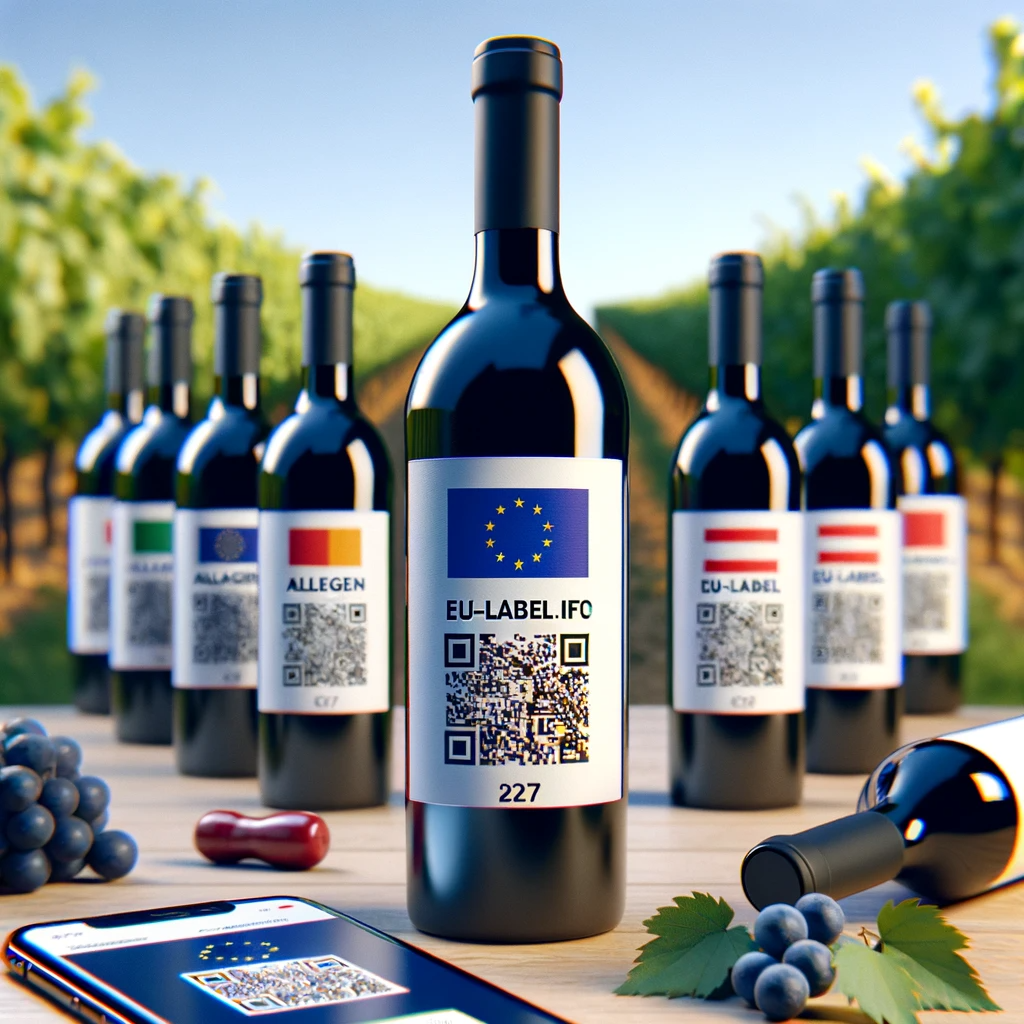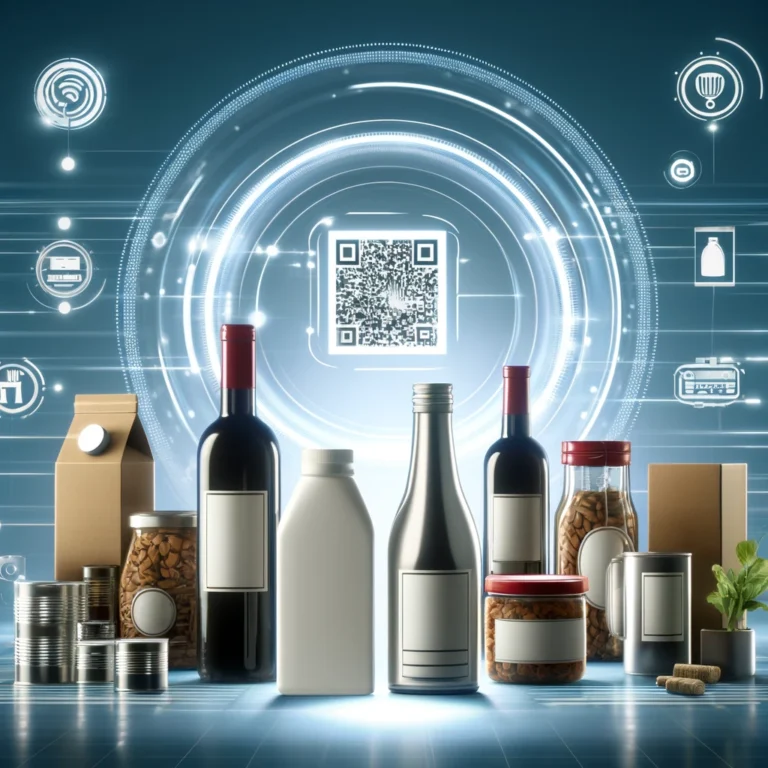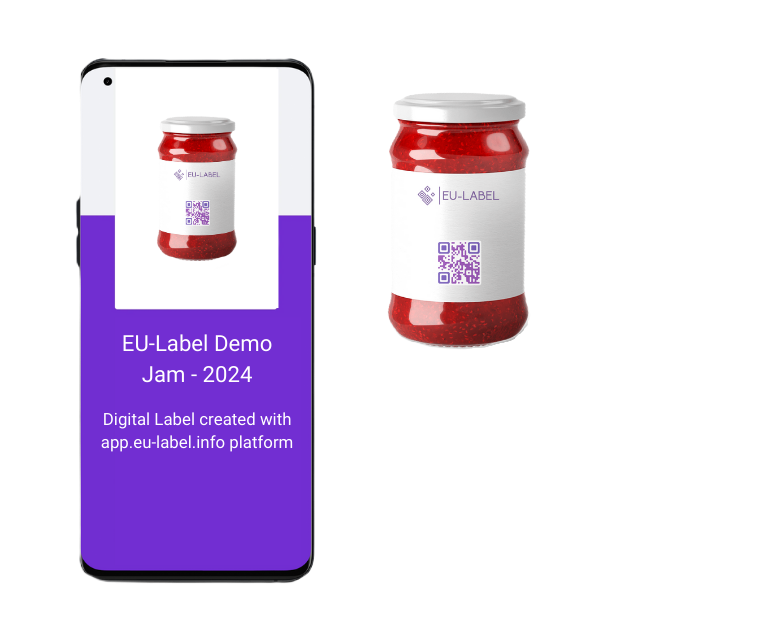18 Jan

From QR Codes to Allergens: The EU Wine Industry’s New Labelling Landscape
The European Union has taken a significant step towards enhancing consumer knowledge and health awareness with its new wine labelling regulations. Starting from December 8, 2023, these rules will transform the way information is presented on wine bottles across the EU, aligning them with broader food labelling standards that have been in place for other products.
In this post, we’ll cover:
Introduction to EU’s New Wine Labelling Rules
Understanding the 2023 Labelling Requirements
Impact on Wines Produced Pre-December 8, 2023
QR Codes and Electronic Labelling Options
Mandatory Information for Wine Labels
Compliance Steps for Winemakers
Enforcement and Penalties for Non-Compliance
Special Considerations for Imported Wines
FAQs on Navigating the New Regulations
Introduction to EU’s New Wine Labelling Rules
The European Union has long been known for its stringent food safety and consumer protection laws, but until recently, wine had been exempt from certain labelling requirements that are standard for other food products. This exemption ends as of December 8, 2023.
The new legislation mandates clearer labelling, which includes listing ingredients and providing nutritional information directly on the bottle or through digital means such as QR codes—a modern approach that reflects our increasingly connected world.
These changes aim to close the information gap between wine and other consumables while also addressing growing consumer demands for transparency regarding what they ingest.
The rules will apply to all wines produced after the 2023 harvest, while wines made before December 8, 2023 will be exempt until stocks run out. This gradual phase-in gives producers time to adapt while still moving the industry toward greater transparency.
Understanding the 2023 Labelling Requirements
Regulation (EU) 2021/2117 sets forth comprehensive guidelines that all wines sold within the EU must follow starting from harvest year 2024 onwards—though wines produced before December 8, 2023 are temporarily exempt until stocks run out.
Key components of these regulations include:
A detailed list of ingredients
Nutritional values per 100mL serving
Allergen information prominently displayed
This shift not only empowers consumers but also places an emphasis on health consciousness in an industry steeped in tradition yet evolving with contemporary needs.
For example, by knowing a wine’s ingredients, calories, and allergens, consumers with food restrictions or health conditions like diabetes can make informed choices. Those simply seeking lower calorie options also benefit.
Impact on Wines Produced Pre-December 8, 2023
Wine aficionados may wonder about their favorite vintages produced before this regulatory changeover date; there is good news here too! These wines will continue to be available without updated labels until existing inventories are depleted.
This grace period provides both producers and consumers time to adjust without immediate disruption—balancing respect for legacy stocks with progressive steps toward full compliance.
Specifically, the new rules only apply to wines first released to the market after December 8, 2023. So wines bottled and labeled before that date can still be sold in the EU until supplies run out, even if they lack ingredient and allergen information.
This ensures no undue waste or financial burden from having to immediately relabel or destroy pre-existing stocks. It’s a reasonable compromise as the industry transitions.
QR Codes and Electronic Labelling Options
One innovative aspect of these new rules is the option to use electronic means like QR codes or URLs linking to detailed product pages online instead of physical labels packed with text—a nod towards sustainability by reducing paper usage while embracing digital solutions.
However, it’s crucial that any electronic label or e-label remains free from marketing content; it must solely provide mandatory details required by law in a clear format easily accessible by consumers seeking product insights at their fingertips.
For example, a QR code on the wine bottle could link to a mobile-friendly webpage listing ingredients, nutrition facts, allergens, and origin. But this page cannot also promote sales or subscriptions. It should focus strictly on regulatory disclosures. Failing to adhere to these guidelines risks penalties.
Mandatory Information for Wine Labels
Every bottle will need to display certain key pieces of information:
Energy value using a standardized “E” symbol based on a per 100mL serving size
Additionally, while full ingredient lists and nutrition details can appear digitally via QR code or URL links:
Allergens must still be physically printed on labels due to their critical importance in safeguarding individuals against potential adverse reactions—an uncompromising stance reflecting public health priorities within this legislative framework.
So at minimum, any allergens like milk, eggs, fish, shellfish, tree nuts, peanuts, wheat, or soy must be explicitly listed on the physical label. No QR code shortcuts here.
Compliance Steps for Winemakers
For winemakers navigating these changes:
1. Thoroughly review Regulation (EU) No 1306/2013 and 2021/2117. Make sure your team understands the new rules inside and out.
2. Update your labelling practices accordingly—whether opting for traditional printed labels or integrating digital alternatives like QR codes. Seek proper guidance to avoid missteps.
3. Seek a specialized labelling solution provider if helpful. Multiple companies offer compliant QR code and webpage generation services tailored for EU wine labeling laws. Their expertise can prove worthwhile, especially for smaller producers lacking robust legal and technical resources.
Wineries should ensure they’re prepared well ahead of enforcement dates so as not to face removals from marketplaces or financial penalties due to non-compliance—a serious consideration given individual member states’ authority over inspections and enforcement actions under Article 89.
Enforcement and Penalties for Non-Compliance
Non-compliant wines risk being withdrawn from sale across Europe—with each member state responsible individually for carrying out inspections according to national procedures outlined within Chapter IV Article 90a of Regulation (EU) No 1308/2013.
Penalties vary but can include both market removal and financial consequences, with fines based on inventory value and severity of violation.
For instance, Greece has outlined maximum penalties of €100,000 for intentional, serious breaches. Latvia can impose fines up to €700 on manufacturers and €350 on retailers for any labelling non-compliance.
So winemakers should view enforcement dates as credible deadlines, not suggestions—member state authorities plan to validate adherence.
Special Considerations for Imported Wines
The new wine labelling regulations apply equally to domestic European wines and imports from abroad.
However, foreign producers may face particular challenges in compliance. Language barriers, lack of EU-specific regulatory expertise, different home country rules, and logistical delays could all prove problematic without proper planning.
To avoid issues, importers should provide their supply chain partners with detailed guidance on the EU requirements, connect them with labelling solutions capable of meeting European standards, and confirm their readiness well in advance of customs checks come December 2023.
Otherwise, shipments risk refusal and penalties if found non-compliant—an expensive and reputation-damaging outcome.
FAQs on Navigating the New Regulations
Q: When do the new wine labelling rules take effect?
A: December 8, 2023. Any wines released to the EU market after this date must comply.
Q: What are the penalties for non-compliant labelling?
A: Financial penalties and potential market removal, depending on severity of violation. Fines can exceed €100,000 in certain cases.
Q: Can I just use a basic QR code to list ingredients?
A: No. Allergens must always be printed directly on labels. Only supplemental information like nutrition details may appear digitally.
Q: Are there any special allowances for small wineries?
A: No exemptions based on size. The same regulations apply whether producing 100 or 10 million bottles annually.
In summary, December 2023 brings major changes to EU wine labelling requirements—including ingredients, allergens, nutrition facts, and progressive digital integration. By proactively planning for these new rules, winemakers can avoid painful penalties and demonstrate commitment to both law and consumer advocacy through transparency.
- Try EU-Label for free : https://app.eu-label.info/
- 3 Free E-Labels
- No credit card, no commitment required
Recent Posts
Copyright © 2023
Owned by Semicolon


